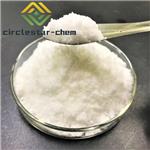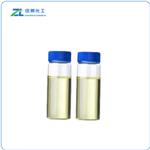Description
Indene (also called 1H-Indene, C9H8) is a flammable polycyclic hydrocarbon. It is a colorless and aromatic smelling liquid. It is used in the synthesis of new C60 derivative (indene-C60 Bisadduct) and to prepare polyindene by the controlled cationic polymerization initiated with cumyl methyl ether/TiCl4 in CH2Cl2. Polyindene is further used to synthesize polyolefins. Indene is also used in the synthesis of istatins, in the production of indene/cumarone thermoplastic resins, and in the production of hydrocarbon resins. These industrial resins, also called indene-coumarone resins, are mainly consumed by the paints & coatings, rubber, and construction industries.
It should be stored in a cool place. The container should be kept tightly closed in a dry and well-ventilated place. Containers which areopened must be carefully resealed and kept upright to prevent leakage. Indene is incompatible with strong oxidizing agents. Recommended storage temperature is 2 - 8°C. Indene is sensitive to light.
References
[1] https://en.wikipedia.org/wiki/Indene
[2] https://www.alfa.com/de/catalog/L12665/
[3] Stephen F. Hahn, Marc A. Hillmyer (2003) High glass transition temperature polyolefins obtained by the catalytic hydrogenation of polyindene, 36, 71-76.
Chemical Properties
Yellow green clear liquid
Uses
1H-Indene is a building block that has been used in the synthesis of isatins. It was used in the synthesis of new C60 derivative, indene-C60 bisadduct. It was used in preparing polyindene by the controlled cationic polymerization initiated with cumyl methyl ether/TiCl4 in CH2Cl2.
Uses
Preparation of coumarone-indene
resins
Uses
Preparation of coumarone-indene resins, intermediate.
Definition
indene: A colourless flammable hydrocarbon,C
9H
8; r.d. 0.996; m.p.–1.8°C; b.p. 182.6°C. Indene is anaromatic hydrocarbon with a five-memberedring fused to a benzenering. It is present in coal tar and isused as a solvent and raw materialfor making other organic compounds.
General Description
A colorless liquid derived from coal tar. Fp: -2°C; bp:182°C. Density 0.997 g cm-3. Insoluble in water but soluble in organic solvents.
Reactivity Profile
Indene is combustible (flash point between 140°F and 200°F). Polymerizes and oxidizes on standing in the air. This reaction is accelerated by heating, acids, and catalysts, including peroxides. Has exploded during nitration with a mixture of H2SO4 and HNO3.
Hazard
Toxic by inhalation.
Health Hazard
Indene is expected to be an irritant
of the mucous membranes.
Purification Methods
Shake indene with 6M HCl for 24hours (to remove basic nitrogenous material), then reflux it with 40% NaOH for 2hours (to remove benzonitrile). Fractionally distil, then fractionally crystallise it by partial freezing. The higher-melting portion is converted to its sodium salt by adding a quarter of its weight of sodamide under nitrogen and stirring for 3hours at 120o. Unreacted organic material is distilled off at 120o/1mm. The sodium salts are hydrolysed with water, and the organic fraction is separated by steam disillation, followed by fractional distillation. Before use, the distillate is passed, under nitrogen, through a column of activated silica gel. It turns yellow in air as it readily oxidizes and polymerises. [Russell J Am Chem Soc 78 1041 1956, Beilstein 5 IV 1532.]





